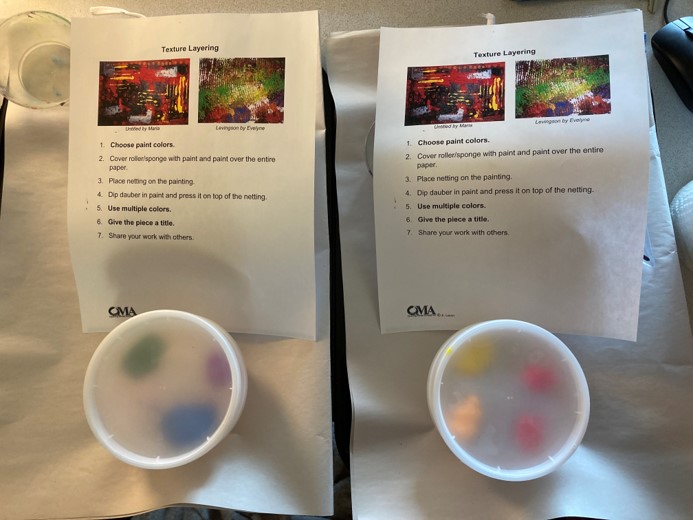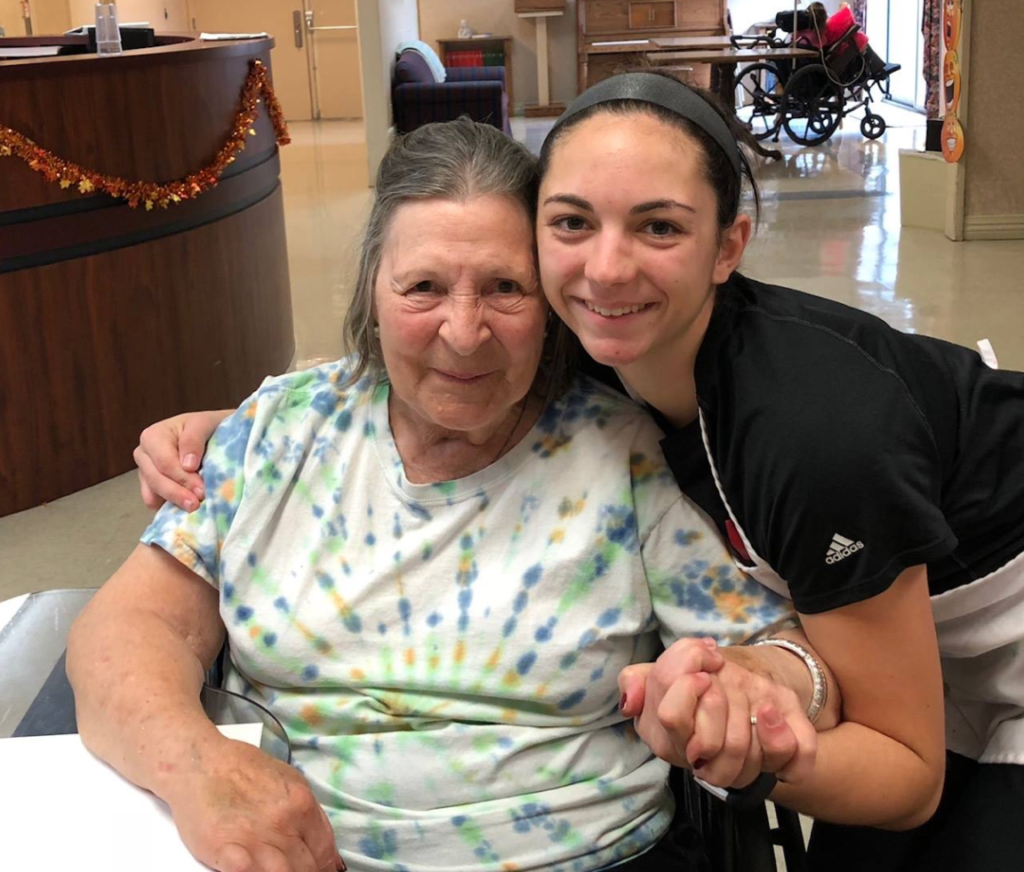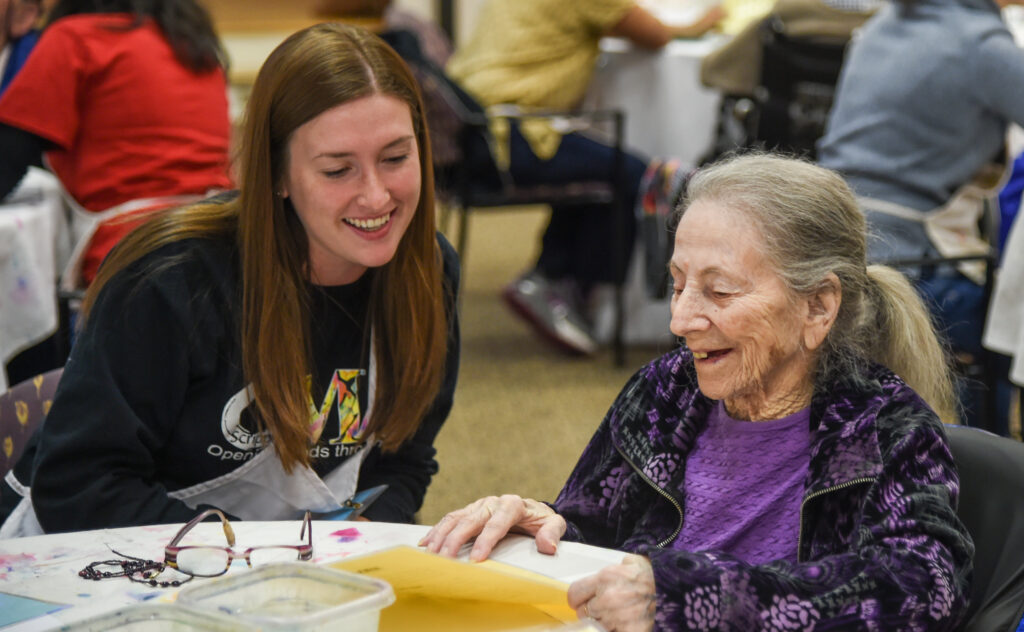Featured Facilitator – Don Talbot
This quarter’s featured OMA facilitator is Don Talbot, a fine arts professor at Mount Aloysius College in Pennsylvania. A trained OMA facilitator since 2015, Talbot currently oversees OMA programming through Mount Aloysius, which offers OMA as an elective course. Their first OMA site was Laurel View Village, in Davidsville, PA. The following academic year, they added a second site, Richland Woods Assisted Living, in Johnstown, PA. Spring semester 2019, a third site was added, Garvey Manor Nursing Home, in Hollidaysburg, PA.
Talbot’s current OMA role includes finding new OMA sites, training OMA volunteers (both Mount Aloysius students and community volunteers), writing grants to secure funding to run the program, matting and framing all artwork produced for their end-of-the-year art show, and developing new OMA art projects.

For his artists and volunteers, the texture-layering projects produce consistently strong results. Using stamps is a particular favorite of the OMA artists in Pennsylvania. They also enjoy the stained glass project. Talbot added additional opportunities for artist choice in that project by allowing artists to choose their ink colors.
When it comes to lessons learned and advice to share about OMA, Talbot has a breadth of knowledge.
“Running an effective OMA program takes much advance planning and organization. Far more time is spent behind the scenes than doing art with the OMA artists. Preparing artwork for display is costly and time-consuming. The program works best when administrators and staff at the sites appreciate the benefits of running OMA programming and fully “buy into” the underlying OMA philosophy. At first, it is common to encounter resistance based on the belief that a person with dementia/Alzheimer’s is no longer capable of doing anything or making decisions.

No matter what project is taking place, Talbot has trained his volunteers to be as positive as possible. He tells the story of one OMA artist who was chronically dismissive of his completed projects, always calling it “junk” or “trash.” When he was asked which way his finished artwork should be displayed, he responded by saying “You can just throw it away. It’s just trash!” This did not phase the volunteer, who happily responded “Well if I was to put it in the trash, which way would it go?”

Talbot mentions that finding and holding on to such great, reliable volunteers is the biggest challenge in OMA. Volunteers are the center of the OMA program since they are needed every week to be paired with artists, as well as to serve and remove supplies. When there is a shortage, sometimes they will have one volunteer work with two more independent artists. They are currently reaching out to high schools in hopes that some of their students might participate in OMA sessions.

For the future, Talbot is currently exploring possibly offering a college course in community engagement that will be largely OMA-focused to local high-school students wanting to earn college credits while completing high school.

Congratulations to Don Talbot on being OMA’s featured facilitator!


